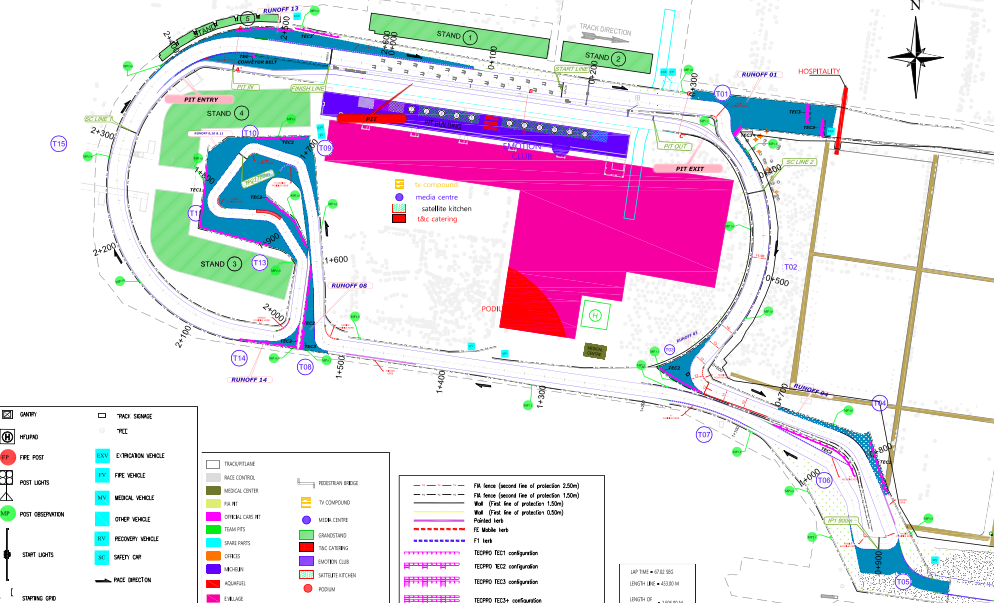The changes made to the Hermanos Rodriguez circuit for this Saturday’s Mexico City E-Prix are expected to offer enhanced overtaking opportunities on the reprofiled Formula E version of Formula 1’s Mexican Grand Prix track.
The largest change to the track involves a new loop being added after the first right-hand corner, which cuts the long main straight used by F1.
But the most significant alteration looks set to be the removal of the final chicane. That creates a 750-metre stretch to the first corner from the exit of the stadium section. This will be by far the longest straight used by Formula E this season.
The loss of the chicane is part of Formula E’s plans to generally reduce how many of them feature on its tracks this season.
A special advisory group which comprises Formula E’s sporting director Frederic Espinos, track overlay manager Agus Delicado as well as drivers Lucas di Grassi, Oliver Rowland and Jerome d’Ambrosio has been instrumental in bringing the changes to effect.
These have so far been seen at the Santiago E-Prix last month with a reprofiled track that did away with a controversial temporary chicane that broke up the long curving back-straight.
In Mexico the cars will now exit the final right turn and then run for 750 metres to the first corner.
The Race gauged the reaction of Porsche’s Andre Lotterer and Jaguar’s Mitch Evans after simulator work on the new layout last week.
The final right hander before the straight will not be quite flat-out and braking into the first turn will feature more lift-and-coasting at a circuit that is forecast to be tough on energy consumption.

As a result drivers and engineers are predicting that the final corner will also be key because it is unknown if maximum rpm on the limiters, especially in qualifying, might be hit. The corner is also likely to have variable grip levels.
“[The changes] will affect a lot the last corner with the tyre temperatures and it is not flat out the last corner, so there will be a lot of action and then approaching the first corner will create more overtaking opportunities,” Lotterer told The Race.
“The rest of the track will see us consume a lot so we don’t have that much energy, so the management will not be so easy. These combined will for sure make the race not so easy.
“The last corner is not flat in any kind of power mode and it is not as high speed as we got in Santiago.”
The reduction in chicanes has received a largely positive response from drivers but Evans contends that street tracks should have at least one to provide a test for drivers.
“I actually quite like chicanes,” Evans told The Race.
“Obviously, you can get them wrong very easily and we have seen that on some of the tracks last season.
“But I think for a street track you need at least one chicane because they’re quite technical and tricky to get right.
Evans thinks that in some cases chicanes could stay as a feature on certain tracks, with the Mexico City facility as an example.
“Moving both was a bit much in this case, I think the last one could have stayed in Mexico for example,” said Evans.
“But it’s what they’ve done so we have to roll with what they’ve changed and try make the most of it.”
The attack mode activation zones will remain in the same position as at last year’s race. This is positioned on the left side of the track between the two left hand turns before the exit of the stadium section.
Drivers will sample the new-look rack for the first time on Friday afternoon in the shakedown session, when they get three laps each at a reduced power level of 110kW.



